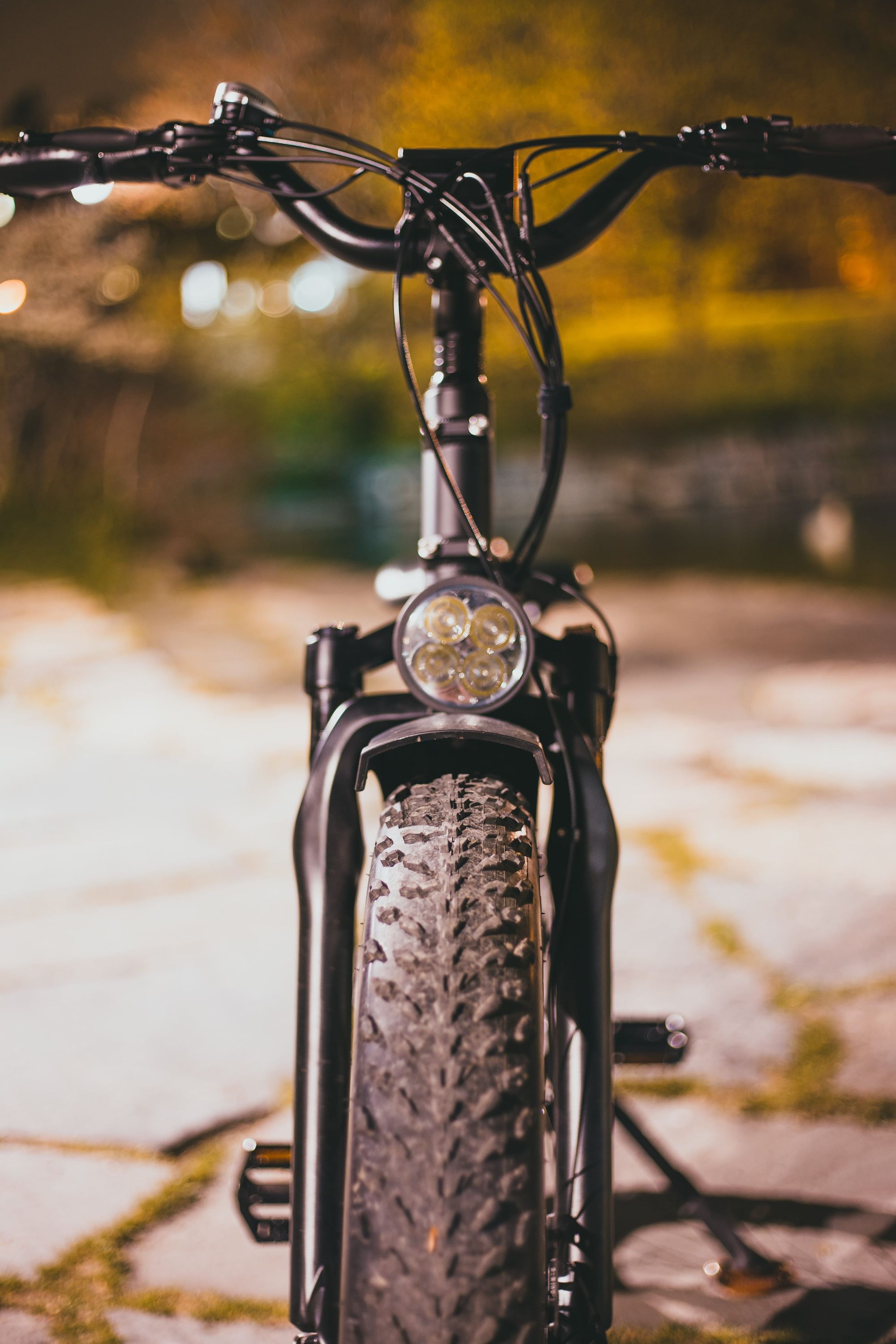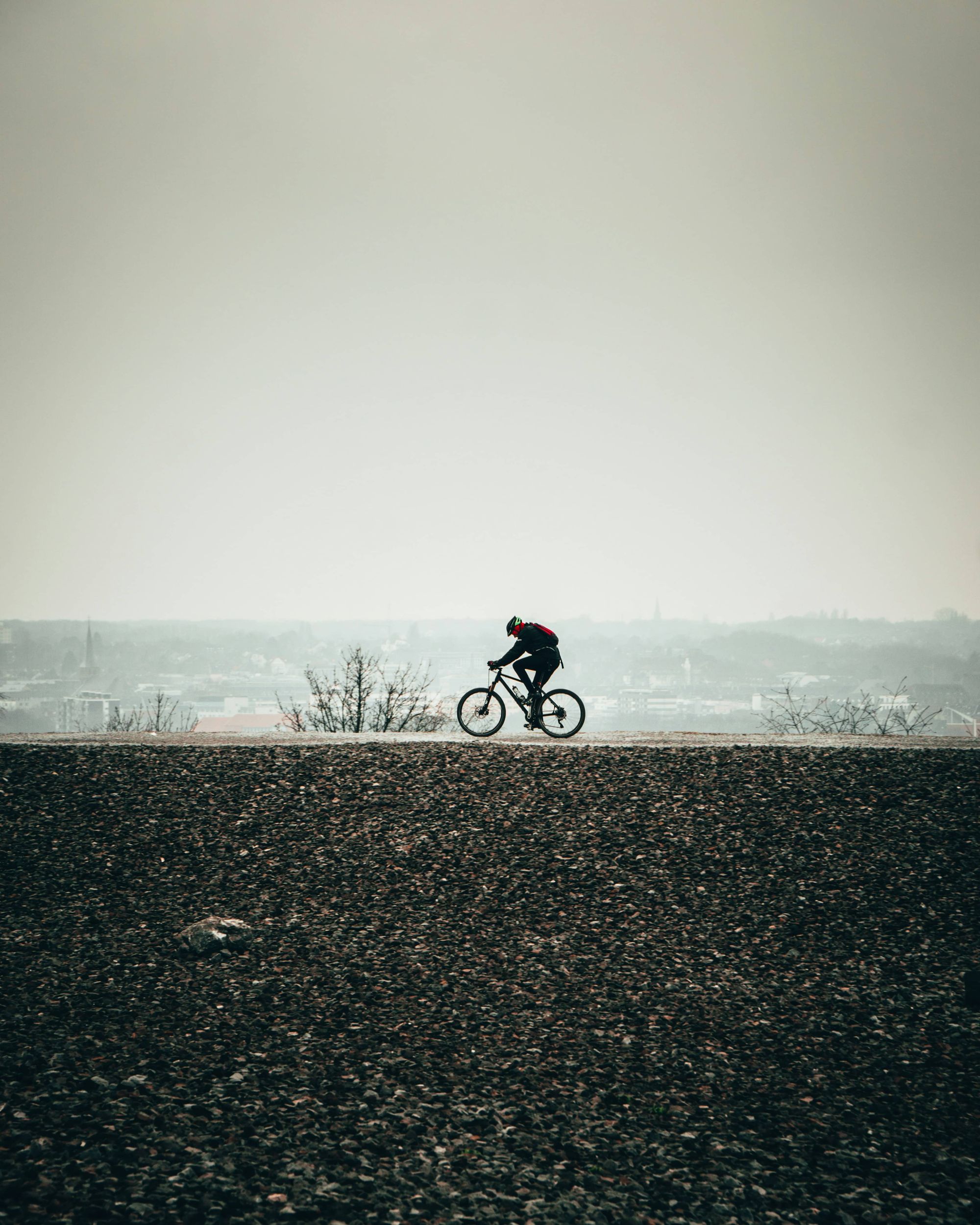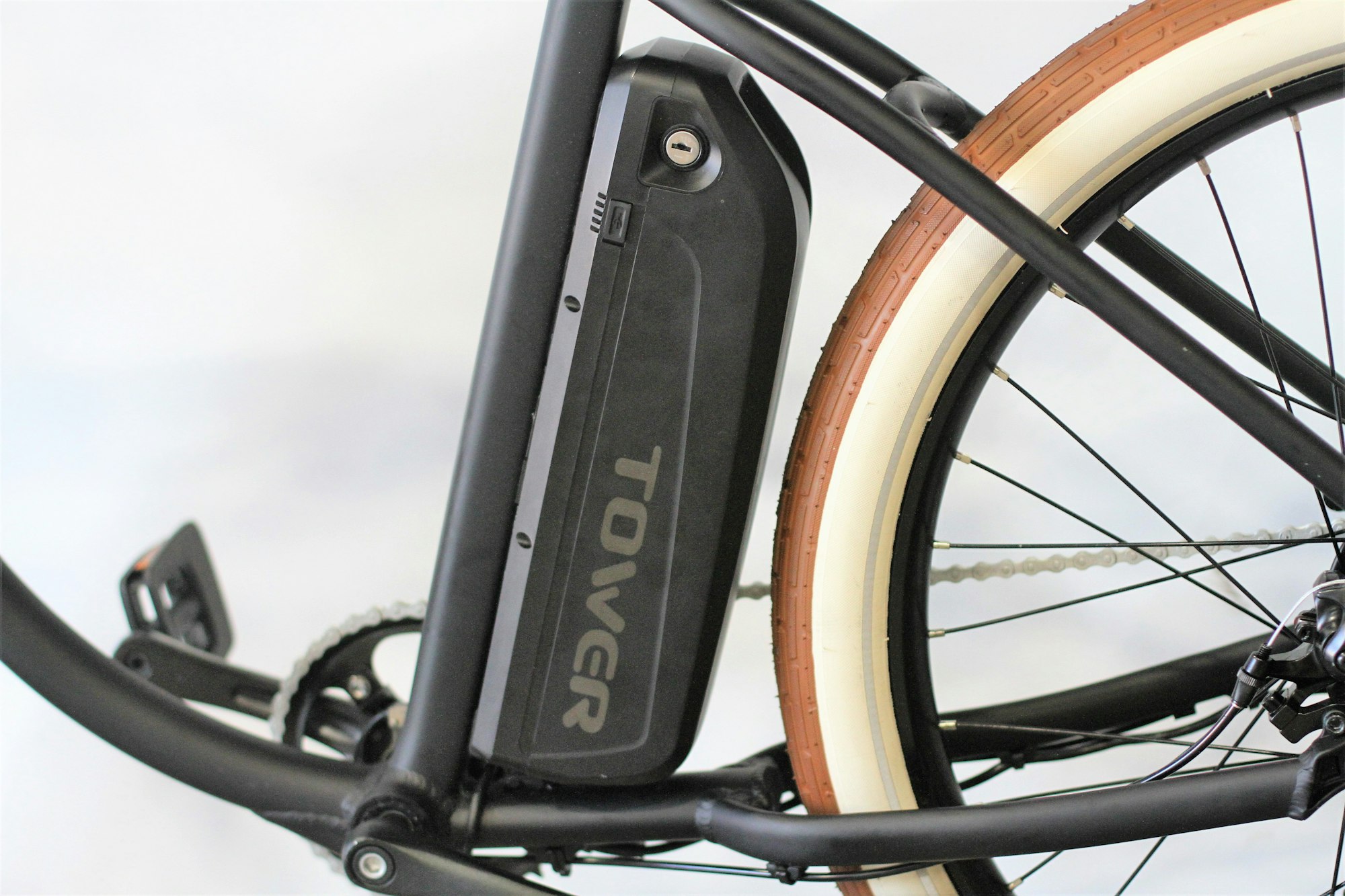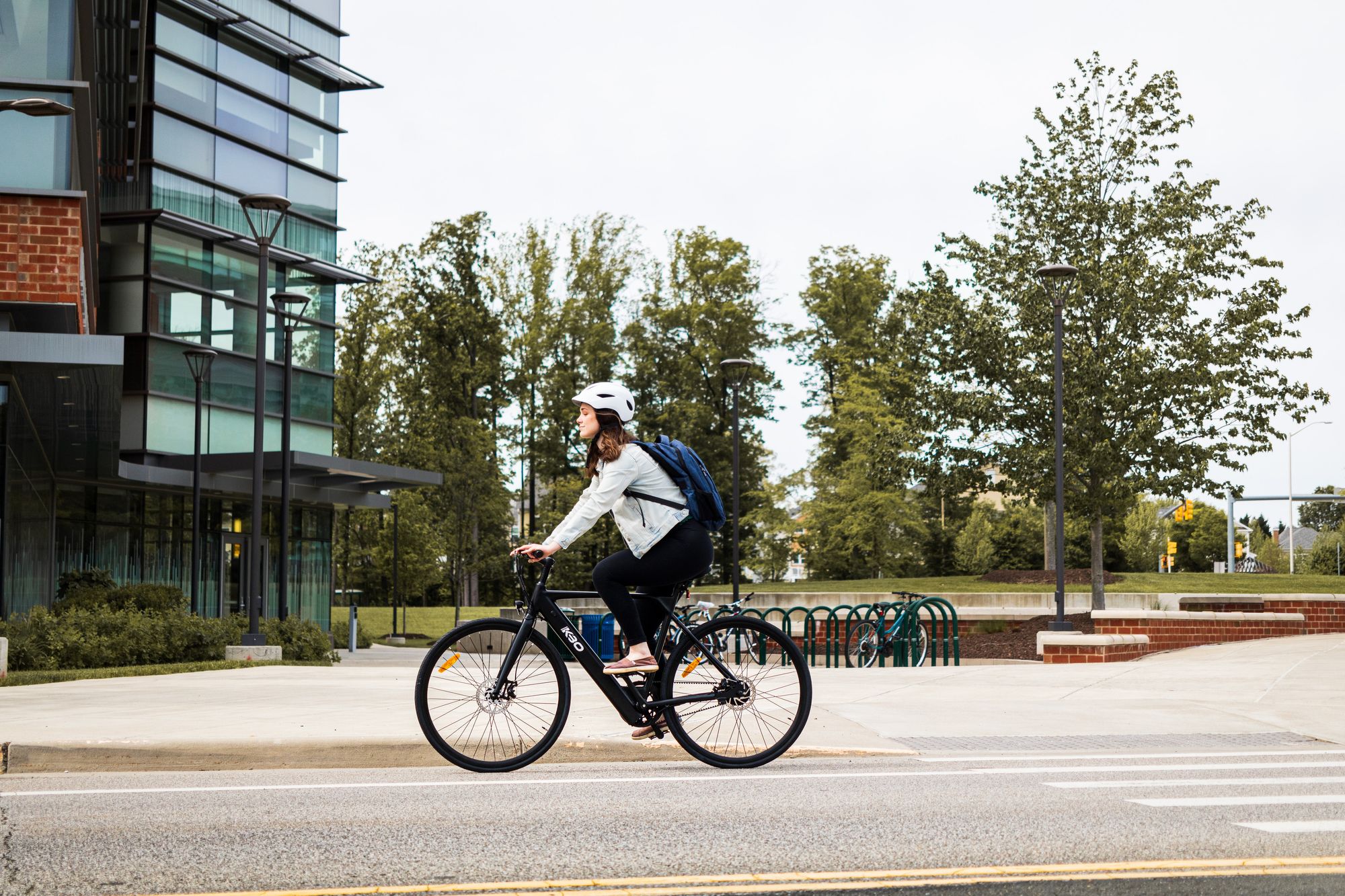But there are a few things you need to do before the cold weather sets in, like looking after your e-bike frame, brakes, lights, tyres, and more. Gearing up for the season is also vital. Don't forget to look after your winter cycling kit, including waterproof jackets and other essentials.
This post will tell you 10 essential tips on preparing your e-bike for winter.
Why is Lubricating My Electric Bike so Important in Winter?
Mud, salt, and the notorious grime from traffic can be particularly harsh on your electric bike during winter. These elements act like a gritty paste, wearing down the moving parts and potentially shortening the lifespan of your bike. Therefore, protecting your electric bike from dirt is essential.
Even then, inclement weather can sometimes make outdoor riding challenging, so having an indoor turbo training setup can keep your fitness levels up and provide a great alternative.
Protecting Moving Parts
The first step in winter care for your e-bike is ensuring all moving parts are well-lubricated. A thorough lube job forms a protective barrier, reducing friction and keeping details moving smoothly.
This is especially important for your chain. Applying a generous layer of wet lubricant will keep it functioning seamlessly, even in wet conditions, ensuring a smoother ride.
Bolts and Bearings
But the care shouldn't stop with just the chain. Your e-bike's bolts and bearings also demand attention during these cold months. Apply heavy grease to critical areas such as stem bolts, brake post bolts, compression cap bolts, and the important seat post bolts.
This isn't merely maintenance - it's a vital step to prepare your bike for the rigours of winter riding. These steps ensure that your bike's essential components stay protected against extreme conditions, extending its usability and keeping your winter rides safe and enjoyable.
How Protecting Your E-Bike's Frame Makes a Difference in Winter
Mud and traffic grime eventually corrode bike frames, primarily made from aluminium. This corrosion can compromise the integrity and performance of your electric bike, particularly during the harsh winter months. It's vital to take proactive measures to guard against these elements to extend the lifespan of your e-bike.
To protect your e-bike's frame effectively, consider the following steps:
- Applying frame protection kits: When you get your new electric bike, use a frame protection kit. These kits usually consist of transparent plastic strips that adhere to your frame, forming a robust barrier against dirt and stone chips.
- Using silicone bike spray post-wash: Apply a silicone spray after washing your bike. This spray restores the shine of your bike’s paintwork. It adds a water-repellent layer, making future cleaning easier and protecting the frame from moisture and grime.
What's the Best Brake Pad Choice for Winter E-Biking?
Organic brake pads are renowned for their strong bite and impressive stopping power, essential for confident riding. However, their performance can be significantly compromised in winter conditions.
These pads are exposed to more dirt and grime when riding through mud and wet conditions. This exposure not only reduces their effectiveness but also shortens their lifespan, making them less ideal for the challenges of winter e-biking.
The Durability of Sintered Brake Pads
For riding in the winter, consider fitting your bike with sintered brake pads. Their composition typically includes metal particles fused together under heat and pressure, producing a more complex compound. This toughness makes them more resilient and better suited to withstand the rigours of winter riding.
Before heading out, ensure your safety and peace of mind with a thorough bike insurance comparison.
Bedding-in For Optimal Performance
After you have fitted the new sintered brake pads, it’s crucial to bed them in correctly. Bedding prepares new brake pads to work effectively with your bike’s rotors.
Skipping this step can lead to glazing — a condition where the surface of the pads becomes too smooth and rigid, drastically reducing their gripping ability. This can render your pads ineffective and dangerous, especially in the challenging conditions of winter biking.
How to Check Your Bike's Battery
Before you go riding in the winter, you must check over the contacts on your battery. Ensuring that the connections are clean is crucial for optimal performance.
This step is vital to maintain efficient power transfer and prevent any potential issues related to dirty or corroded contacts, which can be more common in wet and cold winter conditions.
To effectively maintain your e-bike's battery in winter, consider these key steps:
- Cleaning Battery Contacts: Use contact cleaner and a dry cloth to clean the contacts on your battery meticulously. This helps ensure the connections remain clean, which is vital for optimal battery performance and power transfer.
- Inspecting the Battery Seal for Elemental Protection: Most electric bike batteries have a seal to protect them from the elements. Before winter riding, ensure this seal is intact to prevent water or dirt from entering the battery compartment, which could cause damage.
- Lubricating the Battery Mechanism: Lubricate the mechanism and lock that holds the battery in place. Proper lubrication is crucial in colder temperatures to prevent the locking mechanism from freezing or becoming stiff, ensuring your battery remains securely in place during your rides.
How to Consider Your Tyre Choice
There are many different options for electric bike tyres. If you ride an electric mountain bike, your tyre choice is more critical. The correct tyre can significantly influence your bike's handling and performance, especially in challenging winter conditions.
Tyres For Muddy Conditions
You can buy tyres designed for deep, wet mud with aggressive tread patterns. However, these might not always be the best choice for electric mountain bikes, as they can negatively impact your bike's handling when the surface becomes firmer.
Look for a tyre that clears mud well and gives you lots of grip, especially on the rear wheel. A tyre that can effectively shed mud while maintaining traction is ideal for winter riding. Your front tyre should be predictable and capable of biting into the dirt, ensuring it doesn’t wash out on corners, a common issue in slippery conditions.
Consider Tyre Weight and Rolling Resistance
Because cold temperatures tend to reduce battery efficiency, it's essential to consider the weight and rolling resistance of the tyres. Avoid heavy tyres with high rolling resistance, as they can affect your bike's range and efficiency.
Looking for an adventure to test your new winter tires? Check out these cycling routes in London to try this winter.
How to Fit Mudguards
Riding your electric bike in the winter can be uncomfortable, with mud and water spraying off your wheels. This splatter can flick into your face and up your back, turning what should be an enjoyable ride into an unpleasant experience. Winter conditions often bring wetter and muddier roads, making this issue more pronounced.
The Effectiveness of Mudguards
This is why fitting your electric bike with mudguards is a wise decision. Mudguards are straightforward devices, but their impact on your riding experience can be significant. They are highly effective in preventing mud and water from spraying onto you and your bike, making your rides more pleasant.
Protecting Your E-Bike and Battery
In addition to improving comfort, mudguards also play a crucial role in protecting your electric bike, especially its battery, from dirt and water. This is particularly important in winter, as the exposure to wet conditions and road debris increases.
Why Changing And Cleaning Your Cables is Important
Before winter kicks in, changing your gear cable is a good idea. The colder months bring harsher conditions, and a new cable is less likely to fail during a ride, a crucial consideration for maintaining safety and performance in winter.
Fresh cables can handle the demands of winter riding better than worn ones, ensuring smoother gear shifts and reliable operation.
Cleaning the Cable Housing for Optimal Performance
The main reason for changing your gear cable isn't just to replace it and clean the cable housing. Over time, especially during the summer months, grime and debris accumulate within the housing, which can impede the smooth movement of the cable.
Remove the old cable and flush out the cable housing with WD40 or a similar cleaning solution. This cleaning process will remove all the accumulated grime over the summer, ensuring that your new cable can move freely and efficiently.
Enhancing Cable Movement in Winter Conditions
This step is significant as colder temperatures can stiffen the cable housing and the cable itself. By ensuring that both are clean and well-lubricated, you enhance the overall responsiveness of your gear system.
This is especially critical in winter when reaction times and smooth operation can differentiate between a safe ride and a potential mishap.
Why You Should Get Some Lights
As the nights draw in, the reduced daylight hours often mean you may not have a choice but to ride in the dark. Winter brings shorter days and the potential for fog, snow, and rain, which can further limit visibility.
In these conditions, having a good set of lights on your electric bike becomes convenient and necessary for safety. We recommend looking for some of the brightest bike lights for added peace of mind.
Front and Rear Lights for Visibility and Safety
A good set of lights mounted to the front and back of your electric bike is essential to keep you safe during these darker rides.
Front lights help you see the path ahead, illuminating the road and helping you spot potential hazards like potholes, branches, or ice patches. Rear lights ensure that you are visible to other road users coming up behind you, significantly reducing the risk of accidents.
Additional Helmet-Mounted Lights
For extra visibility, consider mounting lights to your helmet as well. Helmet lights add another level of safety by increasing your visibility from higher up, making you more noticeable to drivers, especially in urban settings or crowded areas.
They also move with your head, providing extra illumination in the direction you're looking, which can be particularly helpful at intersections or when navigating through tricky sections of your route.
What About Hi-Visibility Clothing?
Wearing dark clothes when riding at night is not advisable, significantly during winter when visibility is further reduced by earlier sunsets and potentially inclement weather conditions.
Bright colours during the day and reflective materials at night can make a substantial difference in how well you are seen. This is why wearing bright and/or reflective clothing when you ride is highly advisable - it can significantly enhance your visibility to drivers, pedestrians, and other cyclists.
Why Electric Bike Insurance Cover is Vital
Electric bikes are expensive purchases that deserve to be protected. The methods above are great for preparing your e-bike for winter. However, one method of protection that is often overlooked is insurance.
Insurance protects your bike and you from a whole host of unexpected problems. Insuring your electric bike is a must for the ultimate peace of mind. Whether your electric bike gets damaged by a pothole, is stolen or lost by an airline, you can find an insurance policy to cover you.
Laka’s electric bike insurance cover will cover you for theft, accidental damage & more. It's insurance made especially for e-bikes with total battery loss & cover, too.
E-BIKE INSURANCE LIKE NEVER BEFORE
Get covered for theft, accidental damage, full battery cover, loss and more. Try our 5-star rated e-bike insurance. It's e-bike insurance, and then some.






